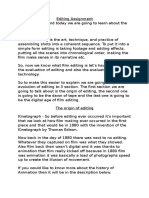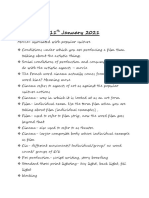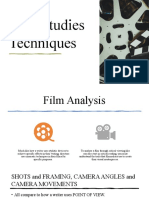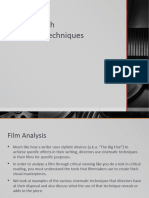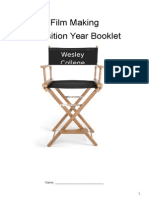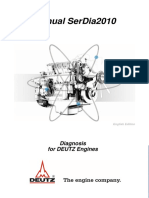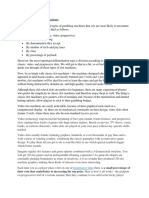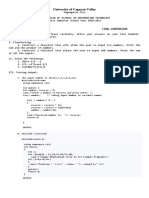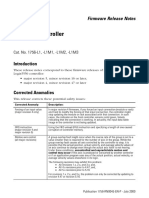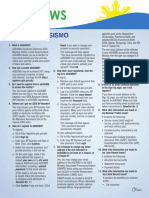0% found this document useful (0 votes)
48 views6 pagesEditing Notes
The document discusses several early pioneers of film including Edison, the Lumiere Brothers, Georges Melies, and Alice Guy-Blanche. It also covers important concepts in film history such as narrative editing techniques, point of view editing, continuity of action, and the relationship between editors and directors. Historical context is provided on the development of cinema.
Uploaded by
TabularJoker :Random VideosCopyright
© © All Rights Reserved
We take content rights seriously. If you suspect this is your content, claim it here.
Available Formats
Download as PDF, TXT or read online on Scribd
0% found this document useful (0 votes)
48 views6 pagesEditing Notes
The document discusses several early pioneers of film including Edison, the Lumiere Brothers, Georges Melies, and Alice Guy-Blanche. It also covers important concepts in film history such as narrative editing techniques, point of view editing, continuity of action, and the relationship between editors and directors. Historical context is provided on the development of cinema.
Uploaded by
TabularJoker :Random VideosCopyright
© © All Rights Reserved
We take content rights seriously. If you suspect this is your content, claim it here.
Available Formats
Download as PDF, TXT or read online on Scribd
/ 6

